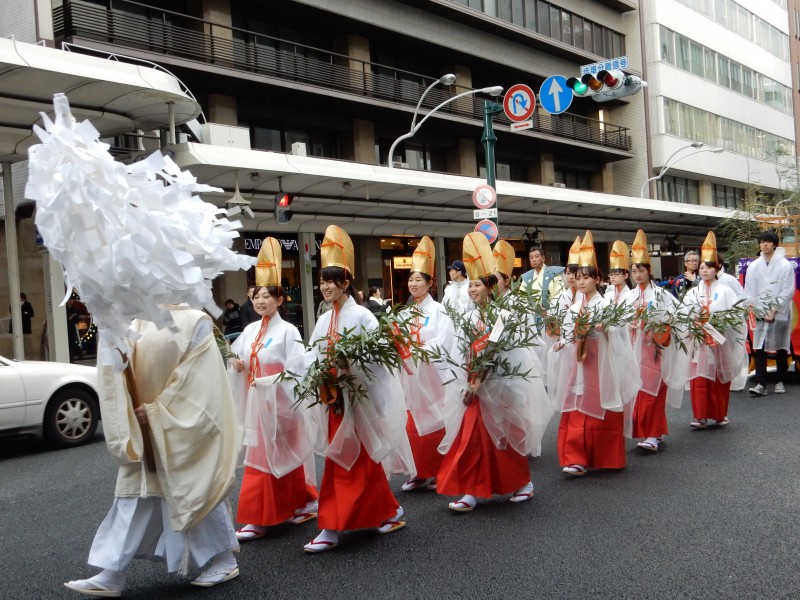
A priest from Yasaka Jinja leads a procession of ‘fukumusume’ or happiness girls who dispense lucky charms to businesses in the centre of Kyoto
Kyoto is an extraordinarily busy place. No sooner has the busy shrine-going of New Year finished than the city is immersed in activities for Toka Ebisu (on the tenth day of the year). Ebisu is one of the most popular of the Seven Lucky Deities, and the only one native to Japan. He’s associated with business success, and those wanting to make money in the coming year are keen to get his blessing.
Previously Green Shinto has carried a description of the activities carried out at Ebisu Jinja, where an excited throng of people ask for their business activities to do well over the coming year. We’ve also carried a piece on the Sennyuji Seven Lucky Deities pilgrimage, where people walk around seven subtemples set in the woods to collect a full set of charms. This year the two events coincided with that of Toka Ebisu, meaning there were three celebrations involving the Seven Lucky Deities on the same weekend. We are blessed indeed!
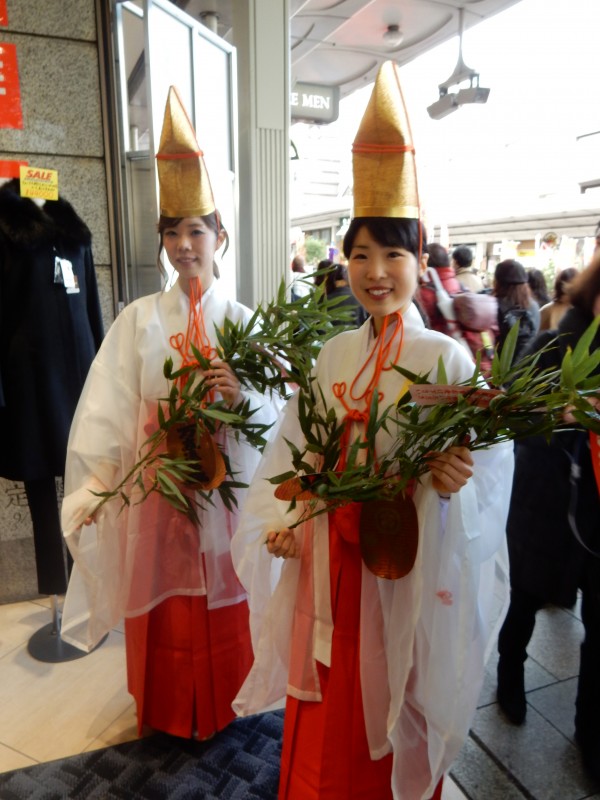
Two ‘happiness daughters’ pose with the lucky charms they are dispensing to shops and businesses
The Seven Lucky Deities are figures from folklore who are supposed to have arrived in Japan in a treasure boat. The origins go back to the fifteenth century, but they took their present form in the Edo Era. (For an overview of who they were, see this account. For their origins, click here.) Ebisu is the most popular, depicted as a jolly fisherman. He’s patronised by businesses in particular.
The Gion Ebisu event consists of a procession from the Yasaka Shrine along the main shopping street of Shijo. As well as the parade of ‘fukumusume’ (above), there are four carts: one for drummers, one for the Seven Lucky Deities, one for a small statue of Ebisu, and one for the sprigs of sasa (bamboo grass) from which charms are hung.
As the procession advances, teams of three work their way along the shops on one side. The teams consist of a priest directing a pair of ‘fukumusume’ who formally hand over the charm in exchange for a prepaid coupon. The teams were running from door to door through crowds of startled shoppers, which caused some bemused expressions. It also created amusing scenes as the traditionally dressed festival participants burst into Starbucks and other stores where tourists were casually chatting.
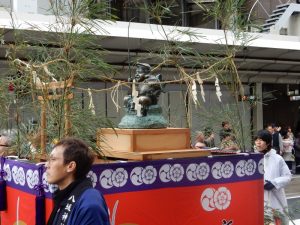
The statue of Ebisu at the heart of the procession
At first sight I imagined the procession to be part of the celebrated Toka Ebisu events centred on the Ebisu Jinja in Gion. But it seems that historically Yasaka Jinja decided to start its own Ebisu celebration, based on one of its subtemples. The shrine has strong connections with Izumo, where the kami Okuninushi is also known as Daikoku through an alternate reading of the same Chinese characters. (Daikoku is the father of Ebisu.)
Unsurprisingly, it was noticeable at Yasaka that the subshrine for Daikoku was packed with people seeking the deity’s blessing. The Seven Lucky Deities spread a lot of happiness and joy in terms of folklore. You could say they not only promote good business, but are good business for the shrines too!
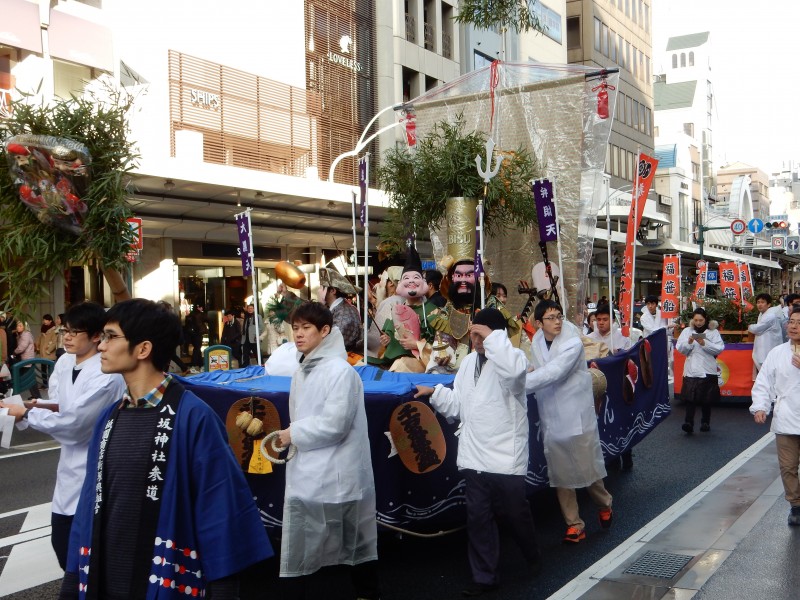
The parade was small by Kyoto standards, put on by the same shrine which organises the month-long Gion Festival in July. ‘Shobai hanjou sasa motte koi’ rang out from participants (May your business thrive, come and collect your bamboo grass lucky charm)
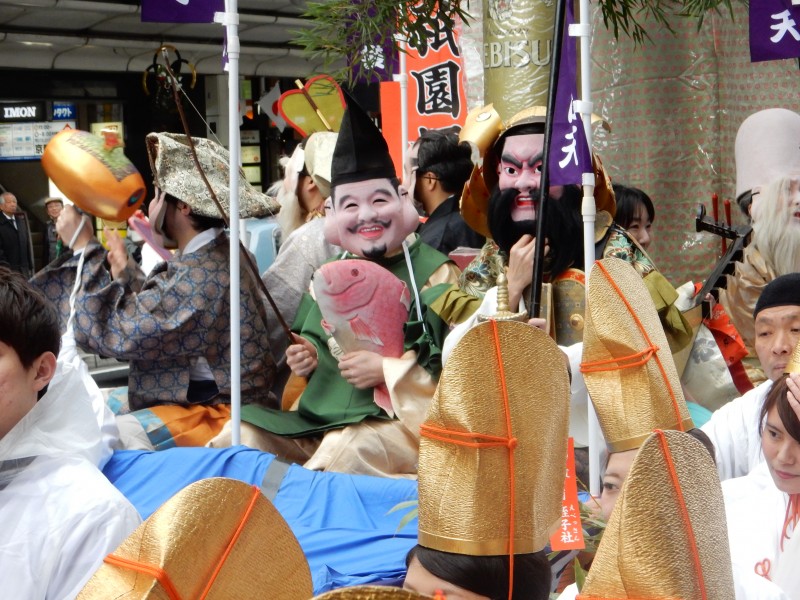
The float carrying the Seven Lucky Deities. In the middle is Ebisu holding a fish. To the right is Bishamonten, Benten and Fukurokuju. To the left with his back turned is Daikoku wielding a lucky mallet.
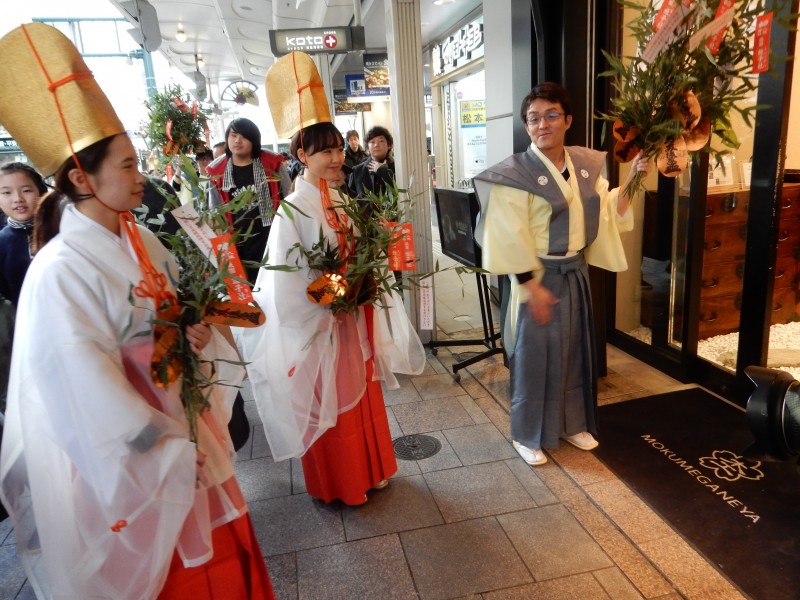
The priest indicates where the ‘happiness daughters’ should go next to present the charms
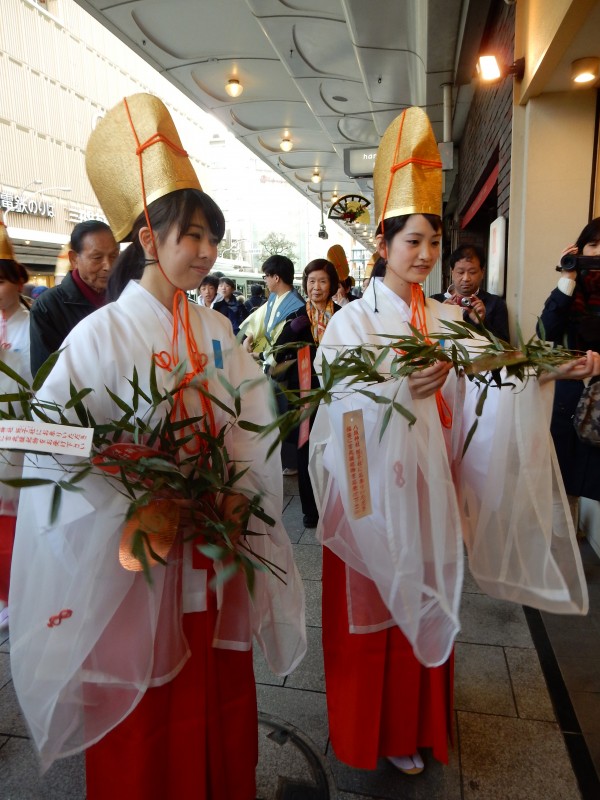
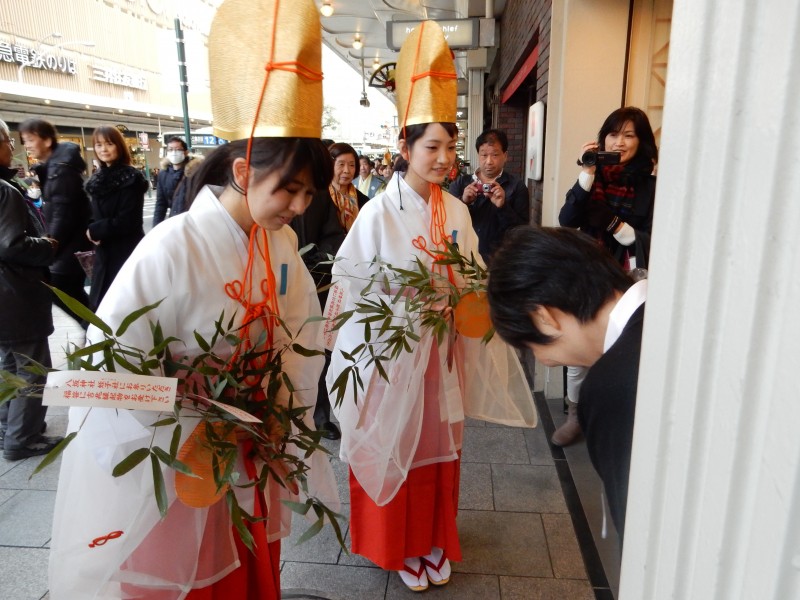
Bows are exchanged on both sides.
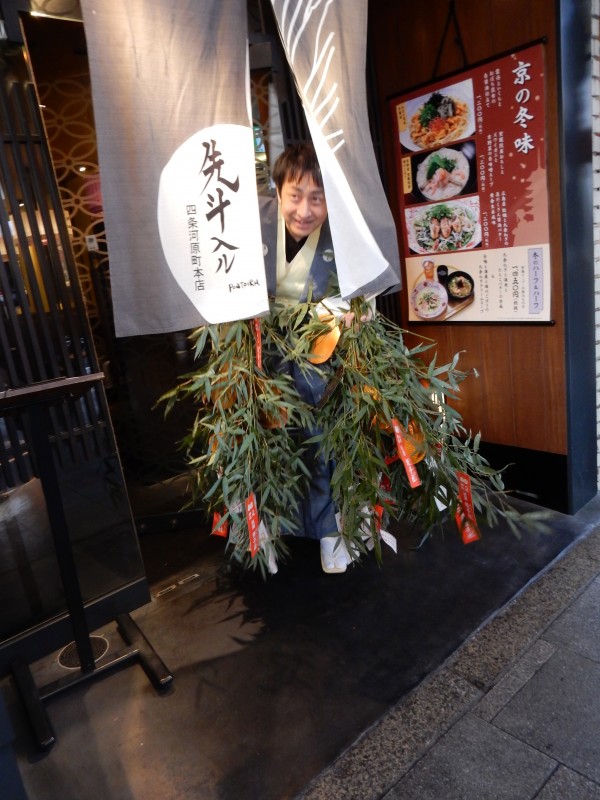
Priest emerging from a shop
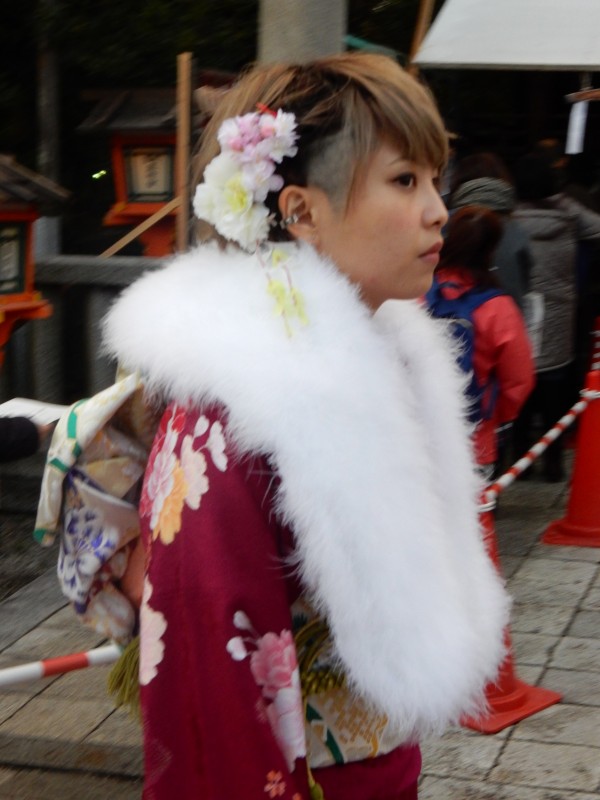
The event coincided with Coming of Age Day, with the middle of town full of young girls in their best kimono.
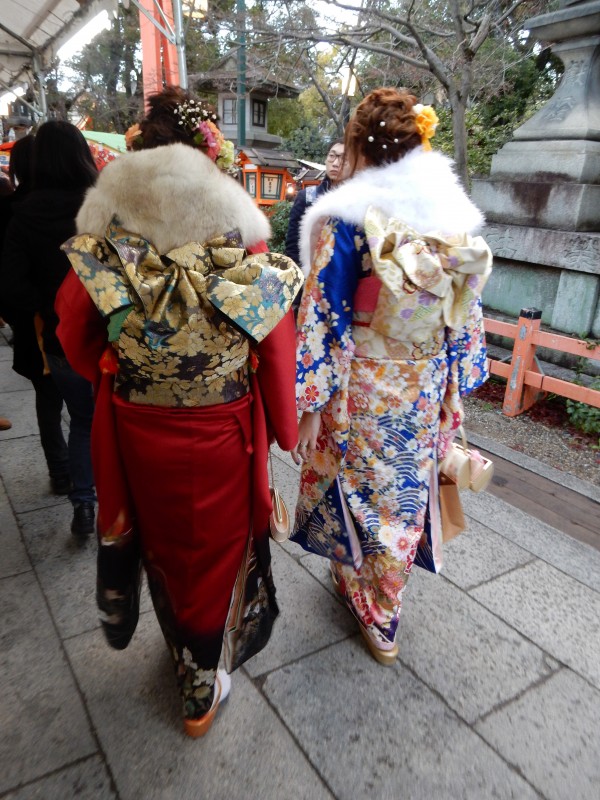
Costumes competing with costumes…
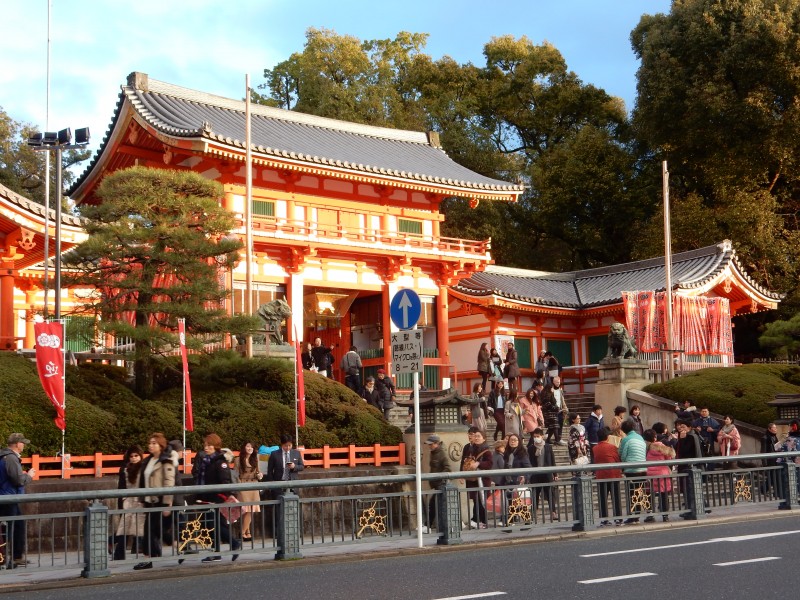
After their hectic outing through the holiday shoppers, the procession returned to Yasaka Jinja sparkling in the sunshine
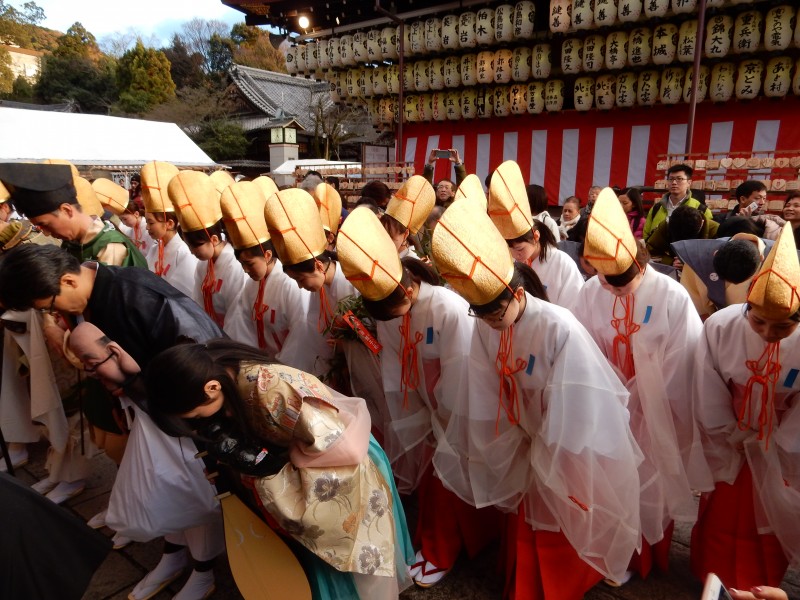
The whole group paid respects to the kami before retiring for naorai (after-feast)
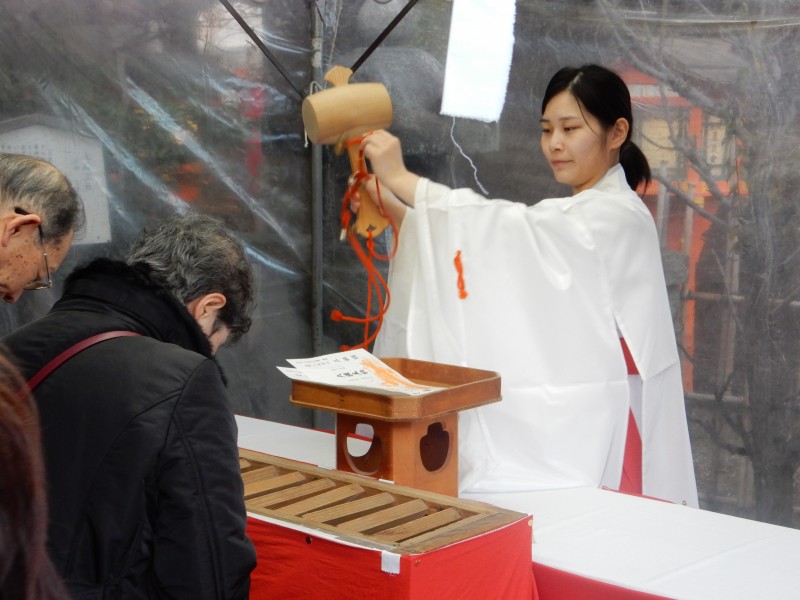
Meanwhile, at the Daikoku subshrine a miko waved a mallet in blessing over worshippers (the lucky mallet is a symbol of Daikoku)




